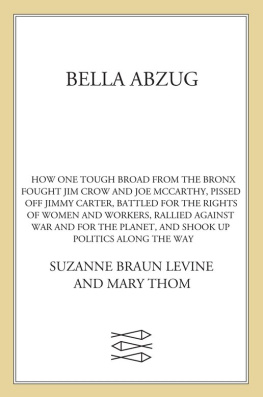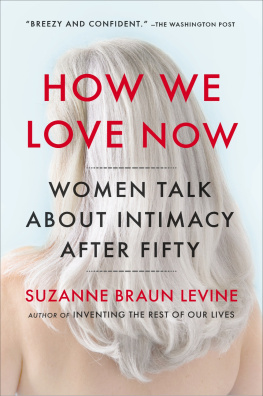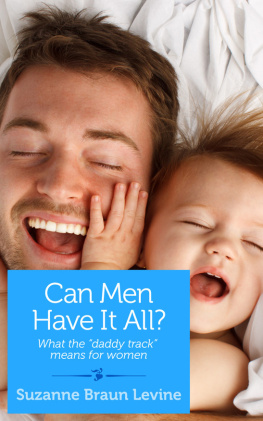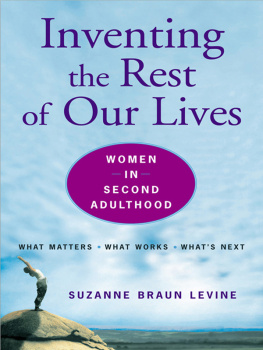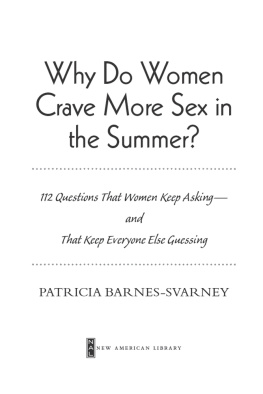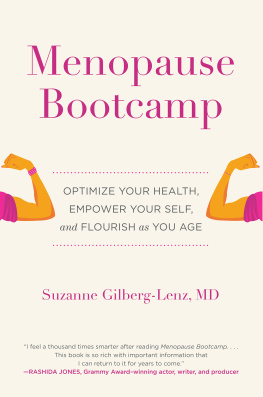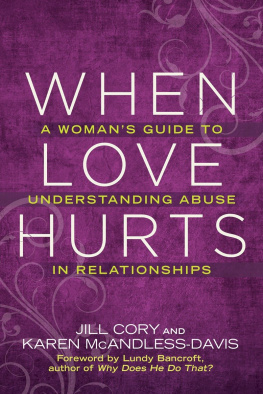Father Courage: What Happens When Men Put Family First

First published in Great Britain 2005
This electronic edition published in 2011 by Bloomsbury Publishing Plc
All rights reserved. You may not copy, distribute, transmit, reproduce or otherwise make available this publication (or any part of it) in any form, or by any means (including without limitation electronic, digital, optical, mechanical, photocopying, printing, recording or otherwise), without the prior written permission of the publisher. Any person who does any unauthorised act in relation to this publication may be liable to criminal prosecution and civil claims for damages.
Copyright 2005 by Suzanne Braun Levine
Grateful acknowledgment is made for permission to reprint excerpts from
the following copyrighted works:
Weathering from Poems 1960-2000 by Fleur Adcock
(Bloodaxe Books, 2000). By permission of the author.
Leap Before You Look from Collected Poems by W. H. Auden. Copyright 1945 by
W. H. Auden. Used by permission of Random House, Inc.
Falling in Love at 55 by Ellen Bass. Ellen Bass, 2004.
By permission of the author.
The Journey from Dream Work by
Mary Oliver. Copyright 1986 by Mary Oliver. Used by permission of Grove/Atlantic, Inc.
The moral right of the author has been asserted.
Bloomsbury Information Ltd
50 Bedford Square
London
WC1B 3DB
United Kingdom
A CIP catalogue record for this book is available from the British Library
ISBN: 978 1 4088 2856 4
Visit www.bloomsbury.com to find out more about our authors and their books. You will find extracts, author interviews, author events and you can sign up for newsletters to be the first to hear about our latest releases and special offers.
For my mother,
ESTHER BERNSON BRAUN
After more than thirty-five years of marriage, there are few surprises, but my husband Bob Levines editorial acumen has been a delightful one for me and an essential contribution to this book. The expert pushing and pulling from a brilliant editor, Janet Goldstein, and a devoted agent, Janis Donnaud, also challenged me to do better. I thank you all.
And to Steve and Cynthia Rubin who contributed an actual room of ones own to work in and to those others who kept the details under controlKaren Grenke, Rebecca Hart, Paula Marsili, and Rachel Rapkinthank you too.
Most of all, I am grateful to the women who shared their stories and the friends in my circle of trust who provide all good things.
Getting to What Matters:
Letting Go and Saying No
Chapter One
Youre Not Who You Were, Only Older
The sense of danger must not disappear:
The way is certainly both short and steep,
However gradual it looks from here;
Look if you like, but you will have to leap.
Much can be said for savoir-faire,
But to rejoice when no one else is there
Is even harder than it is to weep;
No one is watching, but you have to leap.
Our dream of safety has to disappear.
W. H. Auden, Leap Before You Look
My first step into Second Adulthood was backward off a ninety-foot cliff. On impulse, I had signed up for an Outward Bound program and found myself poised in full rappelling gearharness, helmet, and guide ropeto walk down the face of what could just as well have been my twelve-story apartment building. The terror was pure. I was only mildly distracted by the reassuring words of our leader: Fear is the appropriate response here. After all, evolution doesnt take much interest in creatures that step backward off ninety-foot cliffs.
I made it down, of course. I had learned the lesson the exercise was surely designed to teach, that fear is not an unacceptable response, but it can be confronted. And I fulfilled a personal mission: to find out if I was still a Tomboy. (The very word, I realize as I use it, is a throwback to a bygone era, not just my own past.) My tomboy self, long lost in a marriage to a nonathletic, non-nature-lover and a busy urban life, played a big part in my personal mythology. Ever since I crossed the fiftieth birthday barrier a couple of years earlier I had wanted to reconnect with that rugged, adventurous outdoorswoman, if indeed she was still an authentic component of who I am. If my tomboy was still there, I wanted to share that part of me with my daughter, who was growing up in a time more accepting of the big-boned body type we share and as a young woman with an unequivocal appreciation of her bodys strength. But first I had to make sure I wasnt perpetuating a myth about myself. Having grown up feeling I was often playing a part written by others, I wanted, as best I could, to get to the truth about my life.
As my feet hit the ground and I looked back up the craggy cliff toward the blue sky and my cheering companions, I was overcome with emotionemotions really, more than I can identify even nowand I began to sob and laugh uncontrollably. But it was after I calmed down and had gone kind of limp that a totally unexpected breakthrough of really cosmic proportions hit. The descent down the cliff came on the fifth day of a seven-day program. I had done everything asked of mejumping into icy water at dawn, sleeping on oars lined across an open boat, climbing a telephone pole, swinging on a rope into a spider-web netso I was primed to obediently take on the next assignment. It was to keep our harnesses and ropes in place and climb back up the wall. Maybe it was because I was so totally wasted by the emotional and physical exertion, but I would like to think it was overcoming fear on the way down that gave me the courage to say no to going back up.
The only others in the group who declined to climb were two women in their fifties. We realized with some astonishment that, for us, saying no was as monumental an achievement as stepping backward off the cliff. Both challenges were more meaningful to the three of us because we were women of a certain age. Each of us had a different reason for coming to the wilderness, yet we shared an awakening drive to sort out our thinking about the next stage of our lives. In our dealings with that cliff we had encountered two essential themes of Second Adulthood: Letting Go and Saying No.
Letting Go and Saying No
In my lexicon, Second Adulthood is the unprecedented and productive time that our generation is encountering as we pass that dreaded landmark of a fiftieth birthday. If you think of your first adulthood as, roughly, the twenty-five years in which you built your life and set your style, the next twenty-five years can be a second chanceto do it better, to do it differently, to do it wiser. I say can be because a lot depends on luckgood health, good fortune, good friends. But a lot also depends on determinationtaking risks, making change, weighing new options.
To seize that second chance requires recalibrating many of the primary forces in our lives and shifting gears. As anyone in our age group knows, to shift gears you first have to disengage the clutch and literally give up control for a moment. In the context of the Second Adulthood transition, letting goof worn-out demands, of old news, of empty promisesis like stepping backward off a cliff. It is terrifying, especially for women who have spent a lifetime holding on, keeping things together, planning, coordinating, and prioritizing. It is hard to surrender to serendipity and to risk and change. It is distressing to find oneself having to renegotiate the most intimate relationships. But whether we see it as an adventure or not, we are at an age when circumstances force us to let goof our children, of our looks, of some of our life goalsand feel ourselves


